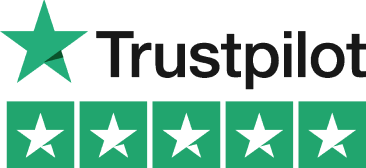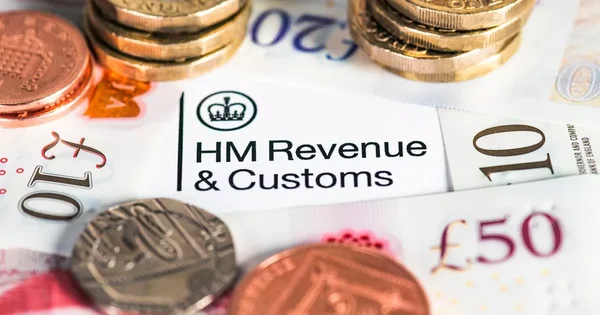Let’s Break This Down Together...
Making Tax Digital is changing how self-employed people manage their taxes. But with deadlines moving and rules varying by income, it’s easy to get confused.
This article unpacks when MTD applies based on what you earn, what the new requirements mean, and how to prepare without stress. We’ll cover thresholds, timelines, exemptions, and how to stay compliant.
By the end, you’ll know exactly where you stand and what steps to take next so there are no nasty surprises later. Let’s dive in.
What is Making Tax Digital for the Self-Employed?
Making Tax Digital is HMRC’s initiative to modernise the UK tax system. For self-employed people, it means moving from annual tax returns to keeping electronic records and sending quarterly updates. While quarterly updates are required, the annual tax return is still due and is a more detailed submission that must be filed by the usual deadline.
The goal is to make tax more accurate, efficient and easier to get right. No more scrambling to find receipts at the last minute before the January deadline. Keeping electronic records is essential for compliance, and having a dedicated business bank account can help you accurately track business income and expenses.
Compatible software will be required to submit your information to HMRC. This represents a significant change from the current Self Assessment system. Each trade or property business requires a separate quarterly update, and these quarterly submissions made every three months are summaries of business income and expenses from self-employment or property businesses.
Quarterly updates are less detailed than the annual tax return, and separate quarterly updates are required for each trade or property business.
When Will MTD Apply to Self-Employed Taxpayers?
The MTD timeline for self-employed taxpayers follows a staggered approach based on income. Implementation dates have been pushed back several times. If your self-employment income exceeds £50,000 annually, MTD will apply from April 2026. This is a two-year delay from the previously announced date.
For those earning between £30,000 and £50,000 from self-employment, MTD will kick in from April 2027. This gives middle-income earners more time to prepare. Self-employed taxpayers with income between £10,000 and £30,000 will join MTD at a future date. HMRC has not yet confirmed when this will be. Sole traders with income below the threshold may be excluded from MTD requirements until further notice.
If you’re in a general partnership, MTD applies from April 2025. Other types of partnerships will join the programme later. When calculating whether you meet the MTD threshold, qualifying income includes both UK and foreign property income.
.
Payment dates for tax payable remain unchanged under MTD tax is still due by 31 January and 31 July for payments on account. The process for paying tax does not change; MTD mainly affects how you keep records and submit returns.
To comply with MTD, it is important to meet all tax obligations and submit updates and returns by the required deadlines. Missing a filing deadline can result in penalties and affect the amount of tax payable.

Income Thresholds and Limits for MTD
Understanding the income thresholds for Making Tax Digital (MTD) is crucial for self-employed individuals and those with property income. Whether you’re a sole trader, landlord, or have a mix of business or property income, your obligation to join the digital for income tax system depends on your gross qualifying income.
For the 2026/27 tax year, the threshold is set at £50,000. In the 2027/28 tax year, it drops to £30,000. If your gross income from self employment or property income is above these limits, you’ll need to comply with the new digital record keeping system and submit quarterly returns to HMRC. This includes income from foreign property, as well as any other taxable income that falls under the scope of MTD for income tax.
If your qualifying income falls below the threshold, you’re not automatically required to join the making tax digital program, but you can opt in voluntarily if you want to benefit from digital record keeping and streamlined tax digital for income processes.
Remember, your MTD status is determined by the gross qualifying income declared on your most recent tax return before the start of the relevant tax year. If your income rises above or falls below the threshold in subsequent years, your MTD obligations may change.
By understanding the income thresholds and keeping accurate electronic records, you’ll be well prepared for the transition to digital mtd for income and any future changes to the tax digital landscape.
Who's Exempt from MTD Requirements?
Not everyone will need to comply with MTD. You’re exempt if your combined income from self-employment and property is below £10,000 per year. Some taxpayers are automatically exempt from MTD requirements based on their circumstances.
HMRC also recognises that digital record-keeping isn’t possible for everyone. You can claim exemption in certain circumstances, such as digital exclusion, by applying to HMRC.
Digital exclusion includes lack of reliable internet, disability, or living in a remote area. You may also claim exemption if you are a member of a religious society whose beliefs prohibit the use of electronic communications or keeping electronic records. Individuals without a national insurance number on a certain date may also be exempt from MTD requirements.
The exemption isn’t automatic unless you are automatically exempt, you’ll need to contact HMRC directly to request it. They’ll assess each case individually.
I once helped a client in rural Scotland secure an exemption due to their unreliable internet connection. HMRC was surprisingly understanding once we documented the connectivity issues.

How to Prepare for MTD as a Self-Employed Person
Even though the deadlines have been pushed back, it's wise to start preparing early. Many self-employed people find the transition takes longer than expected. Begin by choosing MTD-compatible software. Many options exist, from simple record-keeping apps to comprehensive accounting packages.
Start keeping digital records before you're required to. This gives you time to get comfortable with the new system without compliance pressure. Keep an eye on HMRC communications about MTD. The requirements and timelines may continue to evolve as implementation approaches.
Consider talking to an accountant who's up to speed with MTD requirements. This is especially important if your tax affairs are complex.
What Happens If You Miss the MTD Deadline?
If you don’t comply with MTD by your implementation date, you could face penalties. HMRC takes digital compliance seriously. HMRC typically offers a “soft landing period” when new requirements are introduced. This gives businesses time to adapt without immediate penalties.
However, continued non-compliance will eventually result in financial penalties. These are based on HMRC’s points-based penalty system.
If you realise you’ve missed the deadline, get compliant as quickly as possible. Submitting a final declaration is necessary to confirm your income tax position and avoid further penalties. Explain any genuine reasons for the delay to HMRC promptly.

Getting Ahead of the Curve: Why Early MTD Prep Pays Off
The MTD rollout for self-employed taxpayers now follows a more gradual timeline. Most people have until 2026 or 2027 to prepare. While this may seem far away, getting familiar with digital record-keeping sooner will make the transition smoother. Many find it beneficial regardless of requirements.
Check your specific circumstances against the income thresholds. This will tell you exactly when MTD will apply to you. Stay informed about any further changes to the timeline. Regularly check HMRC's guidance or sign up for their email updates.
Remember that MTD aims to make tax administration easier in the long run. The initial adjustment period is an investment in more efficient tax management.











